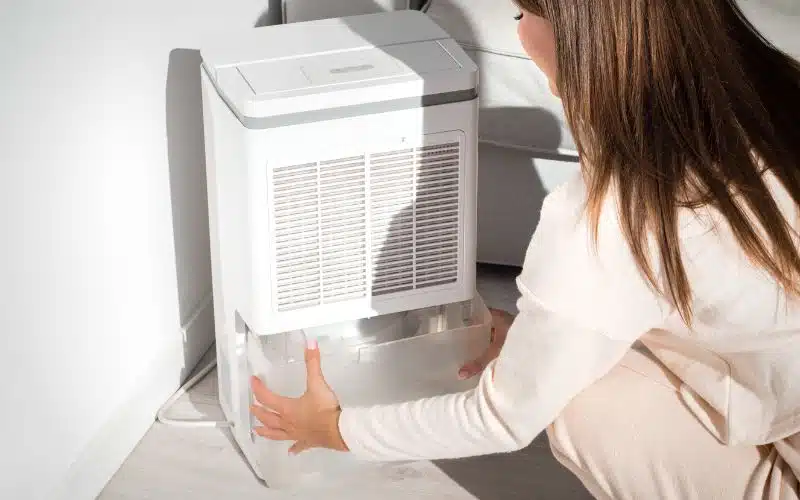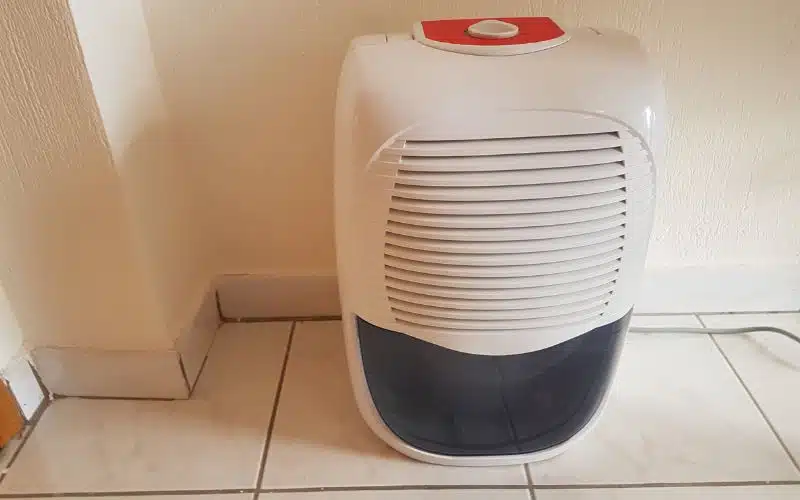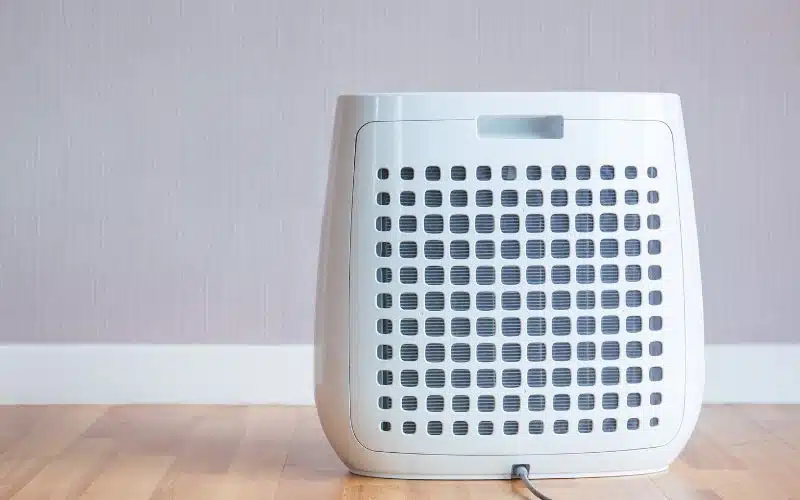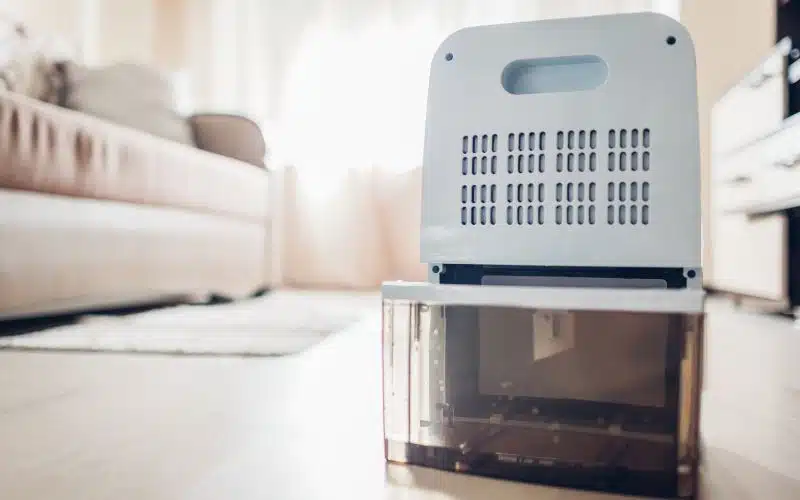A reliable Hisense dehumidifier is indispensable for maintaining the right temperature in your environment.
However, including a filter and drainage hose in the dehumidifier package is also important, as these components are essential in improving the unit’s performance.
Though Hisense is a well-known brand for innovative appliances, does the company equip its dehumidifiers with filters and a drain hose? Let’s find out.
Hisense dehumidifiers come with a filter and drain hose. However, due to their specifications and compatibility, some of the company’s dehumidifier models do not come with a drain hose. Most recent dehumidifier models have a drainage port allowing you to attach a drain hose conveniently. With other Hisense models, you must manually drain the unit’s water.
In this article, you will discover whether your Hisense dehumidifier comes with a drain hose and filter.
You will also learn how to attach a drain hose and filter to your dehumidifier if necessary.
Do Hisense Dehumidifiers Come Standard With Filters and Drain Hose?
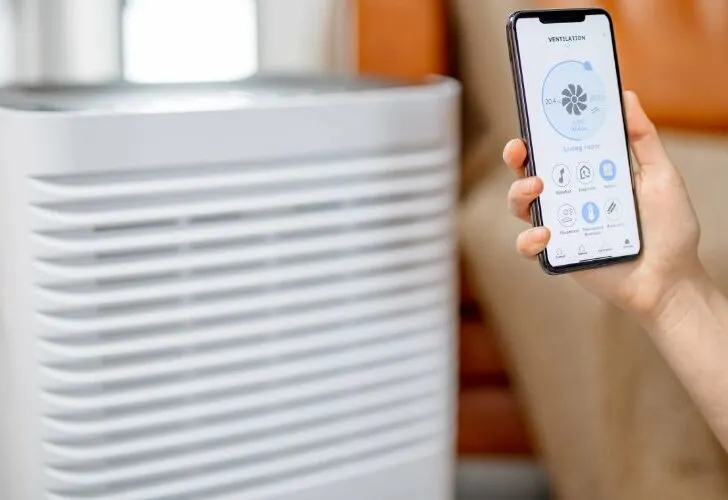
Some Hisense dehumidifiers come standard with filters and drain hoses. However, some Hisense dehumidifier models do not have a drain hose or a filter.
Hisense dehumidifier models like DH70KP1WG, DH70KP1SLE, and DH7019KP1WG typically come standard with a filter and drain hose.
However, models like the Hisense DH50K1G come with a standard filter but do not have a drain hose. In comparison, the Hisense DH50K1W model does not come with a drain hose or filter.
However, you can purchase a filter and a drain hose separately for any of these Hisense dehumidifier models.
Below is a table showing Hisense dehumidifier models with filters and drain hose compatibility
| Model Name | Filter Included | Drain Hose Compatibility |
|---|---|---|
| Hisense Model DH70KP1WG | Yes | Yes |
| Hisense Model DH50K1G | Yes | No |
| Hisense Model DH70KP1SLE | Yes | Yes |
| Hisense Model DH50K1W | No | No |
| Hisense Model DH7019KP1WG | Yes | Yes |
Most Hisense dehumidifier models come with built-in filters.
These filters play an important role in improving the air quality by keeping dust and other particles from the unit’s components while it operates.
The filters also ensure the air circulating the room is cleaner and more breathable. The filters are removable and replaceable, which makes their maintenance relatively simple.
The drain hose, on the other hand, is an option in Hisense dehumidifiers for continuous drainage.
Instead of manually emptying the water bucket, attach the drain hose to the dehumidifier’s drainage port.
Then you can direct the hose to a nearby drain, sink, or drainage point.
This component is especially beneficial if the dehumidifier is in a location where emptying the water bucket is inconvenient.
However, if your dehumidifier is a manual model with no filter or drain hose, consider purchasing one for your device.
But before purchasing it, there are some factors you have to consider to guide your decision-making process.
Here are the factors you need to keep in mind:
#1. Compatibility
Before purchasing the drain hose and filter, ensure it is compatible with your Hisense dehumidifier model.
Check the product description and the user manual to confirm its compatibility.
#2. Size and Length
For the size and length of the drain hose, measure the distance between the dehumidifier and the drainage source to ensure the hose is long enough.
You should also check the drain hose diameter and compare it to the drainage port to ensure it fits securely.
Ensure you purchase the right size for your Hisense dehumidifier model for the filter.
#3. Quality and Material
Consider the quality of the material. Ensure it is high quality with durable materials that will prevent leaks and last long.
For filters, consider products with strong and effective formulation capabilities. This feature will improve the ability of the filter to capture dust and other particles.
Can You Attach a Filter and Drain Hose to Hisense Dehumidifiers?
You can attach a filter and a drain hose to Hisense dehumidifiers. However, not all Hisense dehumidifiers are compatible with drain hoses and filters.
However, if your model is compatible with both components, you can attach it to your dehumidifier unit.
These components improve the convenience and functionality of the dehumidifier by allowing continuous and easy drainage and enhancing the air quality.
Here’s a guide outlining the steps to attach a drain hose and filter to the Hisense dehumidifier:
#1. Attaching a filter
To attach a filter to your dehumidifier unit:
- Locate the filter compartment by consulting the user manual of your Hisense dehumidifier model. The compartment is often on the front or side of the dehumidifier.
- Open the filter compartment panel. Depending on the specific model and design, you might have to lift, slide, or pull the panel cover.
- If replacing an existing filter, gently slide out the old one from its compartment.
- Insert the new filter carefully into the filter slot. Ensure it fits securely in the filter compartment.
- If there are any directional markings on the compartment, take note of it for proper placement.
- Once you have secured the filter in its compartment, close the filter compartment panel and ensure it fits securely to prevent air leakage.
#2. Attaching a Drain Hose
To attach a drain hose to your dehumidifier unit:
- Check your user manual to locate the drain port on your Hisense dehumidifier. The port serves as a connection to attach a drain hose for continuous drainage.
- Also, check the compatibility of the drain hose with that of the drainage port.
- Push one end of the hose into the drainage port on your dehumidifier until it fits securely.
- If the hose is not as tight as it should be, you can use a clamp to secure it to the drain port.
- Place the other end of the drain hose at a suitable drainage point, such as a floor drain or sink.
- Test the drainage connection to ensure the water drains through the drain hose properly and into the drainage point.
Note that the specific steps might differ depending on the model of your Hisense dehumidifier.
You can also consult your user manual for more specific guidelines to attach your drain hose and filter.
Where Is the Filter Located in a Hisense Dehumidifier?
You can find the Hisense dehumidifier filter in the front grille or the air intake area of the dehumidifier unit. However, the location of the filter may vary depending on the dehumidifier model.
Below is a more detailed guide to locating the filter in your Hisense dehumidifier:
#1. Front Grille Area
In most Hisense dehumidifier models, you can find the filter behind the front grille or the unit panel.
To get access to the filter, follow these steps:
- Disconnect the dehumidifier from its power source for safety.
- Gently open the front grille panel using the model’s release mechanism; this might involve pressing a releasing clip or latch.
- Once you open the grille panel, you will see the filter behind it. It might be a mesh or screen filter.
#2. Air Intake Area
The air intake area is another common location for a hisense dehumidifier filter.
The intake area is where the unit draws in humid air and processes it. You can find the air intake area on the front or back of the dehumidifier.
Here’s how to locate the air intake filter:
- Check the exterior of the dehumidifier. The air intake area is usually on one side of the units
- Search for a panel that can easily open.
- Open the panel to access the filter.
However, if you are having trouble locating the filter, check your Hisense dehumidifier user manual.
The user manual often includes instructions and diagrams that will guide you to the exact location of the filter.
Once you have complete access to the filter, you can clean or replace it if necessary.
Additionally, a dirty filter can reduce the dehumidifier’s performance and the air quality it produces.
Here are steps for removing and cleaning the dehumidifier’s filter:
- Gently slide out the filter from its compartment slot. Check the filter compartment for any clips or tabs holding it in place before removing it.
- Depending on the Hisense dehumidifier model, the filter might be washable or replaceable.
- If the filter is washable, place it upside down, under a water faucet at low pressure, and ensure the water runs over all parts of the filter.
- Slow it to dry and replace it in the filter compartment aligning it with any tabs or guides until it snaps in place.
Do You Need a Drain Hose for a Manual Hisense Dehumidifier?
Whether or not you need a drain hose for a manual Hisense dehumidifier depends on the model of the Hisense dehumidifier.
Some manual Hisense dehumidifiers consist of a built-in water tank, which requires manual disposal. In such cases, a drain hose is not necessary.
Furthermore, if your manual Hisense dehumidifier does not have an internal pump, you do not require a drain hose.
However, other manual Hisense dehumidifiers come with a drain hose option. This option allows you to drain the dehumidifier continuously, without interruptions, like a full water tank.
Moreover, if you are unsure whether your appliance requires a drain hose, consult your user manual or contact Hisense customer support.
Though a drain hose might not be necessary for manual dehumidifiers, it reduces the need for constant disposal of the unit’s water tank.
